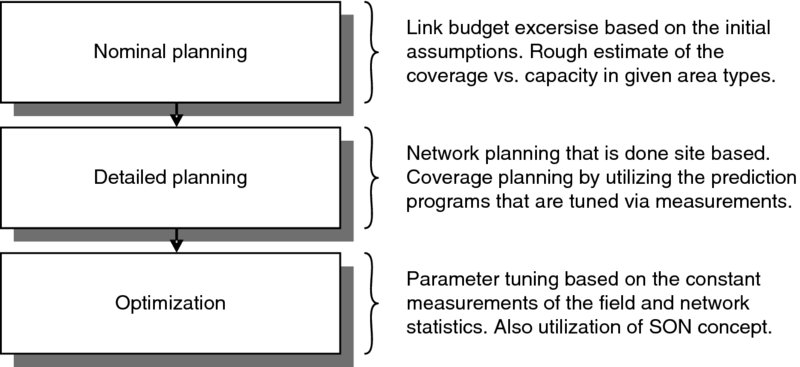21 Planning of Advanced 3G Networks
Jyrki T. J. Penttinen
21.1 Introduction
This chapter presents the network planning aspects for the LTE and LTE-Advanced radio interface. Typical methods are presented for estimating the LTE coverage and capacity in the nominal and more advanced phases of the network planning and deployment. As an essential base for the planning, LTE link budget is introduced. Also useful radio propagation models are described for the realistic estimation of the radio path loss.
In general, the LTE and LTE-Advanced radio network planning has many elements that are comparable with the previous mobile communications systems. The common goal of all mobile system radio interface dimensioning is to estimate the coverage and capacity of the services, by adjusting the available parameter values in the planned environment types. Please note that the planning guidelines of the basic UMTS/HSPA are presented in Chapter 12.5 and can also be referred to in more detail in [1].
21.2 Radio Network Planning Process
The radio network planning process can be generalized as presented in Figure 21.1 [2, 3].

Figure 21.1 The main items of the LTE radio network planning.
The network planning is only one item in the deployment project. The final outcome of the radio plan depends on the given time frame for the rollout, the target quality, offered capacity and quality. Figure ...
Get The Telecommunications Handbook: Engineering Guidelines for Fixed, Mobile and Satellite Systems now with the O’Reilly learning platform.
O’Reilly members experience books, live events, courses curated by job role, and more from O’Reilly and nearly 200 top publishers.

